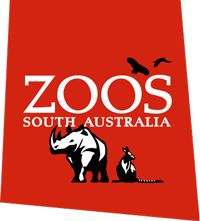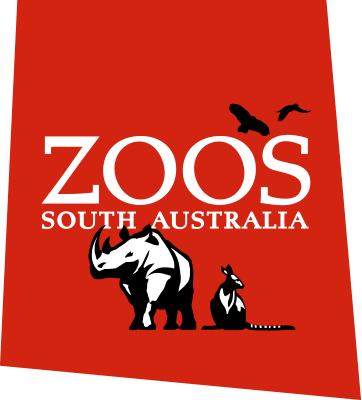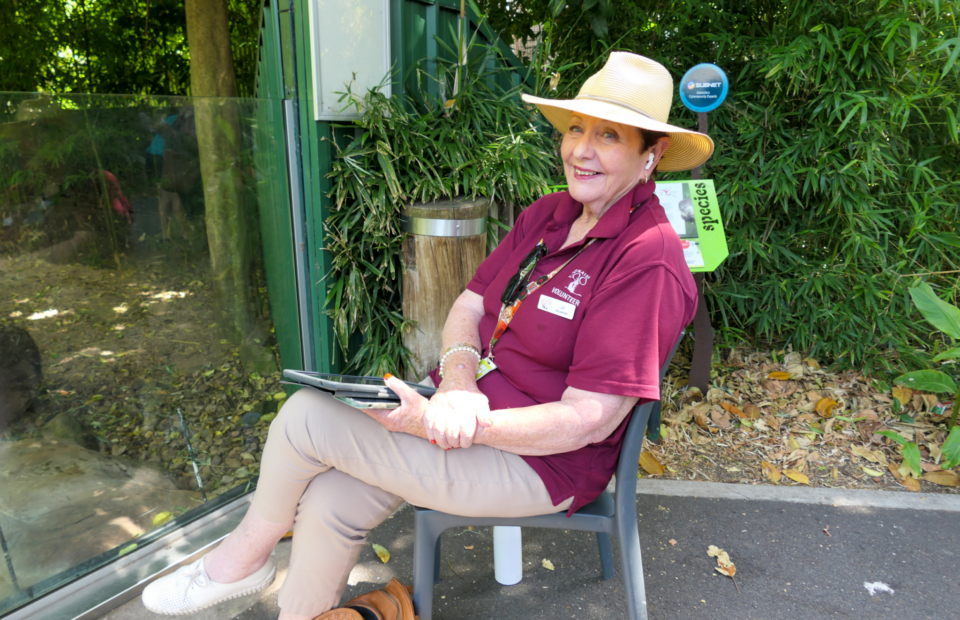Every March 3 is United Nations World Wildlife Day – an annual celebration of wild animals and plants. This year, the theme is connecting people and planet: exploring digital innovation in wildlife conservation.
Justine Partoon is the Animal Welfare Manager at Zoos SA. Working across Adelaide Zoo and Monarto Safari Park, one of Justine’s roles is to lead a dedicated troop of volunteers in the vital collection of animal welfare data.
It is the Zoo Watch team’s responsibility to carefully monitor an animal/s and plot their movements and behaviours around their habitat, and other points of interest.
“Not so long ago, volunteers used to carry out the watch via paper and pen. It was time-consuming for the volunteers and for my predecessor. After gathering thedata , the Animal Welfare Manager would then have to laboriously input and analyse the data to get the key results.
“Since 2023 we’ve been using the Zoo Monitor application which is used by Zoos SA under the name Zoo Watch. The program is fully customisable to our projects and has inbuilt analysis. It saves me heaps of time,” says Justine.
Developed by Lincoln Park Zoo in the USA the application is free for accredited organisations like Zoos SA.
Digital innovation has meant that Zoos SA volunteers undertaking Zoo Watch use an iPad. When they power on they are presented with an appropriate ethogram (a catalogue of species specific behaviours) as well as habitat maps that Justine has diligently created and uploaded.
“As well as collecting the data, I might pose a pertinent question about a particular animal. So, for example, I might ask how often the volunteer sees foraging behaviour or the rubbing up against a particular tree or rock,” continues Justine.
Part of Justine’s job is to compare observations captured during a Zoo Watch with natural behaviours exhibited in the wild. Doing so ensures that the keeping team better understands the behaviours of the animals they care for and that we are promoting species appropriate behaviours and positive experiences for the animals. If those naturally occurring behaviours are not observed then Justine can then consider next steps to rectify the situation.
“Ideally, when the data has been analysed I’m hoping to find behaviours that reflect the species wild activity budget . However, if there is a behaviour of concern identified, we now have objective data to measure the behaviour and implement mechanisms to improve the situation.
“The welfare of animals is our priority so keeping check on their behaviour through Zoo Watch, provides us with an insight into the animals experiences, allowing us to make inferences about their mental state. This information can allow us to deliver expertise and excellence in wildlife care and animal welfare.”
As a science-led and accredited organisation, it’s important that we use evidence-based management for the 500 plus species that live across both sites with innovation only helping to ensure we can keep on top of growing species numbers. Good animal welfare is the backbone of our ZAA accreditation. Zoo Watch helps to make the accreditation process just that bit more efficient. And there are more efficiencies to come.
Although Justine hasn’t implemented it yet, there’s a possibility that Zoo Watch could extend to monitoring species overnight.
“At the moment we move Zoo Watch to a different animal or species every couple of weeks but only during the day. In the future, I’d like us to do much more. For instance, we’ve already trialled monitoring the giraffe at Monarto Safari Park at night. We have seen the giraffes use the shelter throughout the night, but their usage is not correlated to weather patterns. I’m desperate to understand more! With the advances in the Zoo Monitor application happening all the time, combined with our eager volunteers happy continue to assist us, we are hopeful it won’t be long before we can collect behavioural data overnight using camera traps and inputting the data into ZooMonitor,” Justine says enthusiastically.
While Zoos SA volunteers focus on using Zoo Watch, university students using the Zoo Monitor application to undertake mutually beneficial research. A number of publications are waiting to be reviewed which feature studies undertaken at Adelaide Zoo. The results of these papers will be shared with colleagues and have the potential to impact species around the globe.
“Working alongside students broadens our ability to cover more species, to share our findings and to hone in on particular areas of interest,” says Justine.
The digital innovation of Zoo Watch has made a huge difference to the workloads and efficiencies in the animal welfare sphere. But it doesn’t end there. What does Justine hope is next in the conservation and animal welfare space?
“24-hour behaviour coding and the incorporation of AI with animal welfare must surely be around the corner,” says Justine. “I can’t wait!”
About Zoo Monitor
- Created by Lincoln Park Zoo, USA
- Made possible in part by the Institute of Museum and Library Services
- Free to download for qualifying institutions
- Works across multiple devices
- Fully customisable
- Built in analysis tool
- Features a support centre
- Zoo Monitor YouTube channel
- Find out more at ZooMonitor







